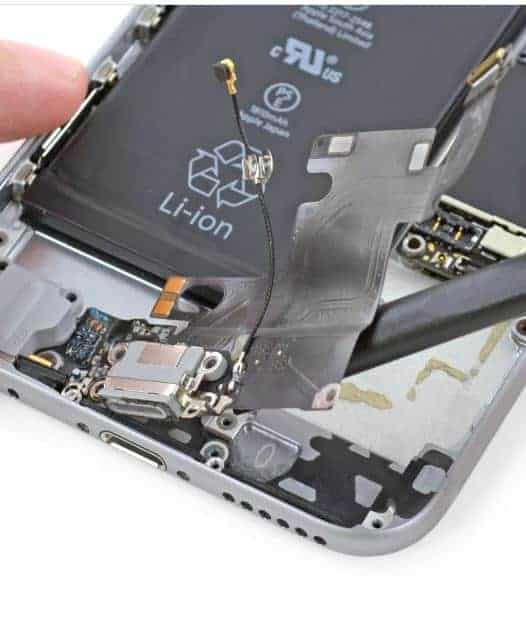The cost of fixing a broken smartphone is sometimes confusing for people – that’s because there are so many factors that go into it. From labor to the cost of parts (and how hard it could be to obtain parts) there are a lot of things that go into the price you might see when you get a repair quote and sometimes that can lead to some sticker shock.
In fact, sometimes it’s so expensive to fix a phone that it’s almost the same or even MORE than what it would cost to buy a new phone. Fixing smartphones is a very specialized skill and technicians are also very much in demand. Understanding why fixing a phone costs so much can help you decide whether to repair or replace it. Although emotions and other factors might make you want to repair your phone, getting a new one with better features and a warranty might be a better choice economically.

The High Cost of Phone Repairs: Unraveling the Mystery
The Economics of Repair Parts
One significant factor driving up repair costs is the price of replacement parts. Original Equipment Manufacturer (OEM) parts, made by the phone’s manufacturer, are often expensive due to their quality and compatibility. Third-party parts may be cheaper, but they can vary in quality and may not always perform as well as OEM parts.
Labor Costs and Expertise
Skilled technicians are needed for complex repairs, such as replacing broken screens or fixing internal components. Their expertise comes at a cost, contributing to the overall price of the repair. Labor costs can vary depending on the repair shop and the technician’s experience.
Limited Availability and Obsolescence
As phones age, replacement parts may become harder to find, driving up their price. Additionally, older phone models might be considered obsolete, making it more difficult to source parts and potentially increasing repair costs.
Business Models and Profit Margins
Repair shops need to cover their operating costs, including rent, utilities, and employee salaries. They also need to make a profit to stay in business. This can lead to markups on repair parts and labor, further inflating the overall cost.
Alternative Solutions
| Solution | Pros | Cons |
|---|---|---|
| DIY Repairs | Potentially cheaper, sense of accomplishment | Requires technical skills, risk of further damage |
| Independent Repair Shops | Often cheaper than authorized repair centers | May not use OEM parts, varying quality of service |
| Manufacturer Repair Programs | Uses OEM parts, trained technicians | Can be expensive, longer wait times |
| Device Insurance | Covers accidental damage, peace of mind | Monthly premiums, deductibles for repairs |
Key Takeaways
- Repair costs can rival or surpass the purchase price of a new device due to the complex nature of smartphones.
- The need for specialized skills and genuine components can significantly increase the price of repairs.
- Consumers may opt to replace a phone instead of repairing it based on economic reasoning and technological advancements.
Understanding the Economics of Phone Repairs
When it comes to phone repairs, the cost can often be surprisingly high. Let’s examine the factors that contribute to these expenses, how market dynamics play a role, and how phone repairs compare to other electronics.
Cost Factors
The cost of repair for a smartphone depends on several variables. Quality parts play a pivotal role; for instance, OEM (Original Equipment Manufacturer) components, such as displays for an iPhone or Samsung, can substantially drive up prices. Labor costs, especially for intricate procedures like battery replacement or fixing a cracked screen, add to the total amount. Repairs under warranty often have a lower cost for the owner but can still be expensive for the manufacturer due to the high standards of phone screen repair services.
- iPhone screen repair costs can stretch from $129 to $329.
- Samsung repair expenses can range from $79 to $599.
Market Dynamics and Phone Lifecycle
Smartphones, with their compact and advanced technology, are subject to specific market dynamics. The lifecycle of phones has increased, which means consumers hold onto their devices longer. The right to repair movement in the USA argues for easier and more affordable access to repair services. This is a response to manufacturers like Apple and Samsung, who often monopolize maintenance, subsequently increasing prices. Additionally, the push for sustainability and reducing e-waste encourages repairing over replacing, influencing the perceived value of repairs.
Comparisons to Other Electronics and Objects
Unlike cars, where maintenance is a regular part of ownership, electronic repairs are often unexpected. However, when looking at the electronics industry, smartphones stand out due to the frequent need for repairs, such as screen replacement. High repair costs make new purchases more tempting, running counter to environmental impact concerns. By comparison, right to repair laws for electronics are less developed than those for automobiles, making aftermarket services for brands like Google Pixel less accessible and more costly.
FAQs
Is it cheaper to buy a new phone or fix it?
Whether it’s cheaper to buy a new phone or fix your current one depends on several factors, including the extent of the damage, the phone’s age and model, and the cost of repairs versus a new device. In some cases, like a simple screen repair on a newer phone, fixing it might be significantly cheaper than buying a new one. However, if the damage is extensive or the phone is old and outdated, buying a new phone might be more cost-effective in the long run.
Why is phone repair expensive? / Why do repairs cost so much?
Phone repairs can be expensive due to several factors. Firstly, the components themselves can be costly, especially for newer or high-end models. Secondly, the repair process often requires specialized tools and expertise, which adds to the labor cost. Additionally, repair shops need to cover their overhead expenses, such as rent and utilities, which can also factor into the overall cost.
What is the difference between screen repair and screen replacement?
When it comes to cell phones – not much. In electronics, screen repair typically involves fixing minor damage to the screen, such as small cracks or scratches, without replacing the entire screen assembly. Screen replacement, on the other hand, involves replacing the entire screen unit, including the display, digitizer, and other components. Screen replacement is usually necessary for more extensive damage, such as a shattered screen.
With modern cell phone repairs, any cracks, damages, or defects to the screen require you to swap out the entire LCD/Digitizer component (which is fused together anyway) so you’ll hear both phrases used interchangeably.
Why is it better to repair than buy new?
Repairing your phone instead of buying a new one can have several benefits. Firstly, it’s often more environmentally friendly, as it reduces electronic waste. Secondly, it can be cheaper, especially for minor repairs. Thirdly, you can retain your existing data and settings without having to transfer them to a new device. Finally, repairing your phone can extend its lifespan, allowing you to use it for longer.







